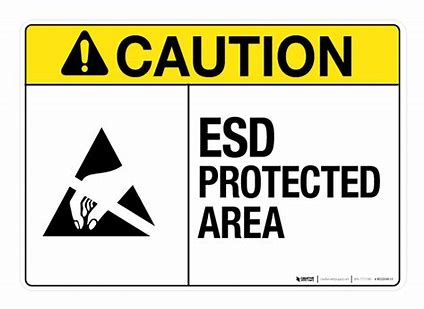Article outling Standards used for ESD Control

Industry
Electronics
Challenge
Electrostatic discharge (ESD) is a significant problem for the electronics industry, causing damage to sensitive components and leading to product failures. As such, many organizations have developed standards for implementing ESD control practices to ensure the quality and reliability of electronic products.
Solution
In this article, we'll briefly explain some of the key standards that are used in the industry.
-
ANSI/ESD S20.20: This standard provides guidelines for the development of an ESD control program. It covers topics such as ESD hazard analysis, training, and the selection of ESD control materials and equipment. The standard is widely recognized in the electronics industry and is used by many organizations to implement ESD control practices.
-
IEC 61340: This standard is similar to ANSI/ESD S20.20 and provides guidelines for the implementation of ESD control measures. It covers topics such as ESD hazard analysis, testing, and the selection of ESD control materials and equipment. The standard is recognized globally and is used by many organizations outside of the US.
-
ISO 10605: This standard provides guidelines for testing electronic equipment for immunity to ESD. It outlines test procedures and requirements for testing equipment to ensure that it is able to withstand ESD events. This standard is particularly important for manufacturers of electronic equipment, as it provides a way to ensure that products are designed to withstand real-world ESD events.
-
MIL-STD-1686: This standard provides guidelines for the control of static electricity in military installations and equipment. It covers topics such as grounding, shielding, and the selection of ESD control materials and equipment. The standard is used by the US military and its contractors to ensure that military equipment is designed and manufactured to withstand ESD events.
-
JEDEC JESD625: This standard provides guidelines for the handling of ESD-sensitive components. It covers topics such as ESD hazard analysis, training, and the selection of ESD control materials and equipment. The standard is used by the semiconductor industry to ensure that ESD-sensitive components are handled properly throughout the manufacturing process.
Merits
In conclusion, implementing ESD control practices is critical to ensuring the quality and reliability of electronic products. The standards outlined above provide guidelines for implementing ESD control measures, testing equipment for ESD immunity, and handling ESD-sensitive components. By adhering to these standards, organizations can mitigate the risks associated with ESD and ensure the success of their electronic products.
